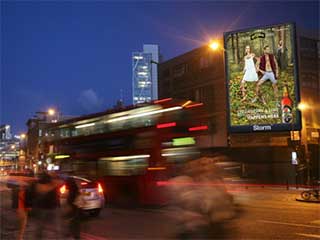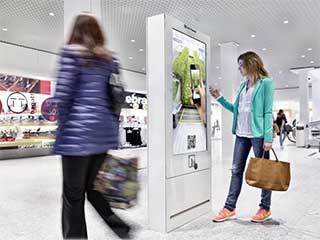Digital screens and modern life
Digital screens – both large LED screens and more handy and common LCD displays of various sizes – have become a constant feature of our daily lives and outdoor environment. Digital advertising is a serious business and it must be profitable and self-promoting. From this point of view, when new arguments appear in favor of digital advertising (and they appear rather regularly), we must list them all at once to help promote this industry.
According to a recent study conducted by OAAA (the Outdoor Advertising Association of America) based on a representative statistical survey (more than 10 thousand respondents aged 18 and above, all large city residents):
- The consumer attitude to digital billboards is constantly improving;
- Digital screens generate higher recall for advertising compared to other traditional ways of outdoor advertising;
- Three out of four (75 percent) respondents easily recall seeing digital billboards in the recent past, and 34 percent could clearly remember advertising clips that they saw on outdoor digital billboards in the past month;
- Among regularly travelling people this number is even higher (52%) since all transport hubs are equipped with numerous digital advertising carriers. It is simply impossible to walk through airports or terminals without noticing bright and dynamic advertising on video screens.
 LED screen by advertising company Storm in London
LED screen by advertising company Storm in LondonThe detailed studies demonstrate that more than half (55%) of travelers retain sharp memories of some advertising clips and brand names that they saw on minimum 3-4 digital screens. Moreover, in the USA many digital screens are included into the public security Amber Alert system and display information about missing children, wanted criminals, community information or weather alerts provided by the relative agencies, such as for example local police or FBI.
Marketologists evaluated that up to 40% of customers watch the displayed information, especially socially valid information, attentively. It was established that the very fact of regular appearance of social information on screens helps to significantly improve screen perception in the eyes of commuters. People become more tolerant to advertising inserts when they understand that apart from advertising there is a chance to learn something really useful.
OAAA President and CEO Nancy Fletcher wrote in the recently published article “Consumers are paying attention to the information presented to them and acting on it, whether they are drawn to a location featured on an advertising, discussing the advertising with friends and family, or attending an advertised event.”
The research showed brand recall is amazingly high among commuters and travelers who pay attention to digital billboards. The analysis of six different campaigns in major U.S. markets (specifically some top performing brand categories in the area of entertainment, gaming, quick-service restaurants, recreation and televised sporting events) demonstrated that travelers recalled seeing at least one specific digital billboard ad at the level of 75-90 percent of time.
When answering questions posed by marketologists about their attitude to dynamic advertising:
- 93% respondents were positively inclined;
- 72% agreed with the statement that advertising on large video screens is an acceptable way to advertise;
- 65% agreed that digital billboards are a good way to learn about sales and events in the vicinity;
- and 61% shared opinion that news on screens help learn about to learn about new businesses in the area.
 Clear Channel digital signage in shopping mall
Clear Channel digital signage in shopping mallWhatever the case, everyone agrees that digital video advertising is more noticeable and informative than the traditional static advertising. Nearly half of people who anticipate in opinion polls mention that they prefer not watch TV advertising at home but that they pay sufficient attention to it when outside in the streets walking or in transit.
Such positive consumer attitude is an additional factor in favor of fastest transition to digital platforms. Today nobody argues the fact that we are heading fast into the digital future. Digital screens will be ubiquitous. OAAA statistics proves that today there are more than six thousand digital LED billboards installed along public highways. The numbers of separately standing LED screens and media façades is not far behind.
LED structures are noticeable due to their size, one spots them from far away. But the number of LED screens is just a minor share in the overall count of LCD screens in the DOOH sector of economy. Over the past 15 years digital advertising grew from a marginal trend into mainstream. It is the digital advertising that gets ever-bigger share of advertising budgets today.
But digital screens and digital advertising is not just utilitarian way of income generation. We should not discount the fact that screens help pass the time in transit, at times offer useful and outright important information, they entertain us, they brighten up our cities by light, color and smiles.





